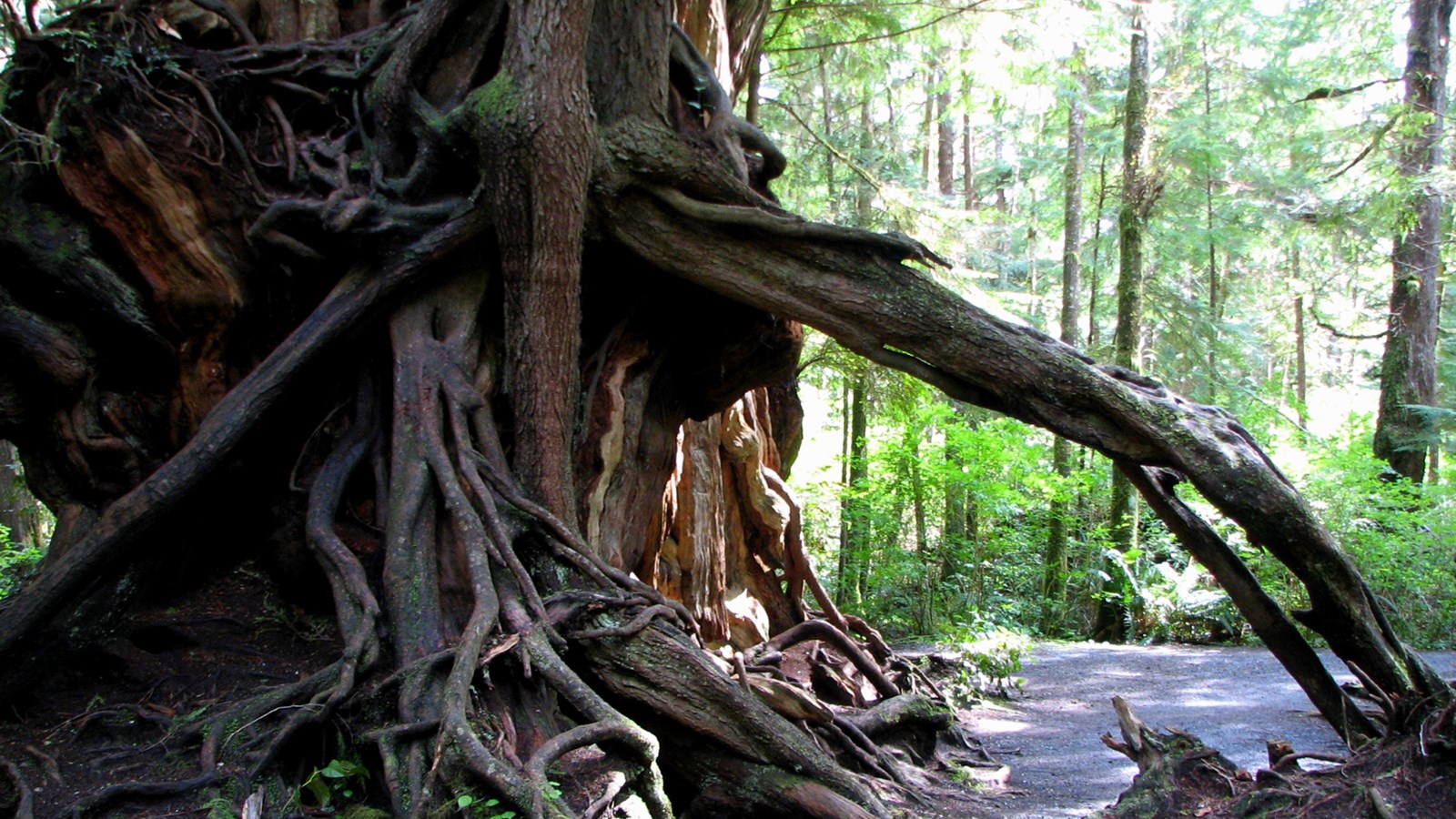Last updated: April 2, 2024
Place
Kalaloch Big Cedar Tree - Parking Area

NPS/E. Goode
Quick Facts
Amenities
1 listed
Trailhead
An easy one-mile loop trail leads to this forest giant. Even half-fallen, its height and mass are incredible.
Full Accessibility Description
Length: 1,665 feet, .32 miles, from parking out to “lollipop,” or loop, ending and backSurface Type: Compacted gravel
Typical Trail Width: 5-6 feet narrowing to 3 feet at “lollipop” ending
Typical Running Slope: Under 5% with brief 6.5% stretch in the middle and 100 feet at 6% on the northern section of the loop ending
Typical Cross Slope: Mostly under 1%, though sections have a significant crown (higher in the middle than on the edges)
Description: A storm in 2014 felled half of the Big Cedar tree, but what remains is still an impressive sight, as is the fallen half on the ground. The trailhead is at the end of a .2-mile gravel road. The parking area is gravel with no defined parking spaces. The Big Cedar itself is just 110 feet from the trailhead. The trail circles the tree to the left and continues east into the lush coastal forest. Please resist the urge to climb on this ancient giant. The trail is wide and stable, but the edges slope off steeply where the trail goes around the tree.
After the tree split in 2014, a trail was constructed that continues 690 feet into the forest and has a loop, or lollipop, ending that runs adjacent to another impressive cedar. The “lollipop” ending narrows to 3-foot width, is crowned, and has steep slopes on both sides where substantial gravel fill was added to even the grade. The trail is typically under 5% grade, with one brief section at 6.5% grade in the center. The lollipop portion of the trail narrows to 3 feet and the gravel slopes off steeply on either side. Wheelchair users should exercise caution if navigating the loop. The loop is 285 feet in circumference. The north side has a 6% grade for 105 feet. Upon completing the loop, return on the same trail to the parking area.
